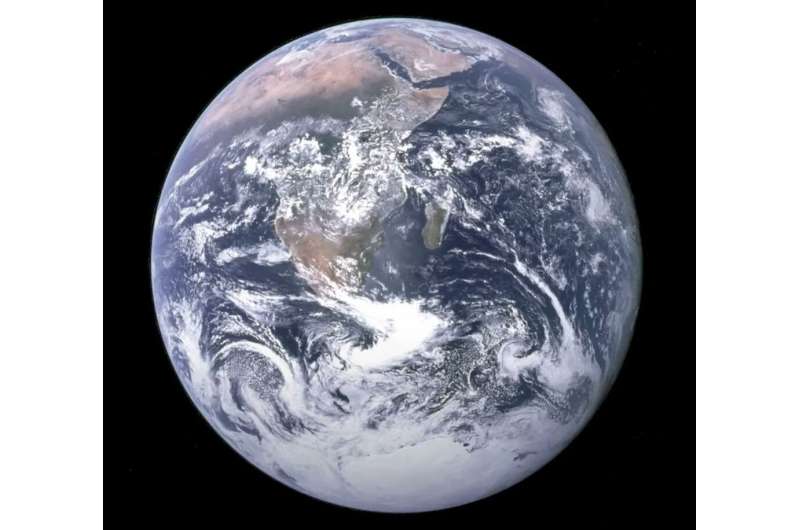Supercomputer climate model is so accurate it predicts the weather patterns seen in the 'blue marble' image of Earth

The "blue marble" was one of the most iconic pictures of the Apollo era. Taken by the astronauts of Apollo 17 on their return trip from the moon, the first fully illuminated image of the Earth taken by a person captured how the world looked on December 7th, 1972, just over 50 years ago. Now, a team from the Max Planck Institute for Meteorology has recreated that iconic image using a climate model.
As a new press release issued in Science described, they didn't do this for a publicity stunt. This effort has been a culmination of two decades worth of work on climate modeling that the team has been working on. Their climate model, which they ran with the help of researchers at the German Climate Computing Center, is now capable of drawing up details as fine as 1 km to accurately recreate environmental conditions at a given time.
To feed that model, though, they need data. Unfortunately, there wasn't a whole lot available in terms of data that could be fed into the mode from 1972, let alone any data from the southern hemisphere, where the image was focused. So the researchers did their best to model what they could based on the data they had by using the equations that had already been developed and the Levante supercomputer at the German Climate Computing Center.
The result was spectacularly similar to the actual image captured by the Apollo 17 astronauts. So much so that even the team was surprised by the fidelity, given the data limitations that went into the algorithm that fed the image.
However, the outcome of models isn't always graphical, and for the sake of inspiration, the team wanted to take it a step further. So they enlisted the help of one of the world's foremost graphics companies—NVIDIA.
They used a tool NVIDIA has developed called Omniverse to visualize the model's output in a format similar to that captured by the blue marble Image. It also used a ray tracing technique commonly used in the other main use case for NVIDIA chips—video games, to make the image as lifelike as possible. And then, the model also introduces its other major advantage—it moves.
The "blue marble" has always been a static image—a one-time snapshot of how the Earth looked on that day in 1972. But, if the model is correct (and it appears to be given its outcome on the day the picture was taken), it can be rewound or pushed forward to watch as the clouds, temperatures, and atmospheric makeup change both before and after the iconic picture.
Effectively, it's like watching what the Apollo 17 astronauts would have seen if they had remained stationary and had a video camera set up to constantly monitor their homeworld. The effect is mesmerizing, but more importantly, it's useful. Plenty of weather and climate phenomena can only be explored if we understand their input factors at the 1 km scale. That is the output of these climate models, and they can be helpful for more than just looking back into the past.
While this particular effort was a way to commemorate a great picture and the original founding of the Max Planck Institute of Meteorology, where many of the researchers work, it is, in essence, a test of a fully functional, high-resolution climate model. That will be ever more useful as we go forward into an uncertain changing climate, though its future outputs might be more disheartening than inspiring as this one was.
More information: Supercomputer re-creates one of the most famous pictures of Earth, Science (2022). DOI: 10.1126/science.adg1727
Journal information: Science
Provided by Universe Today





















